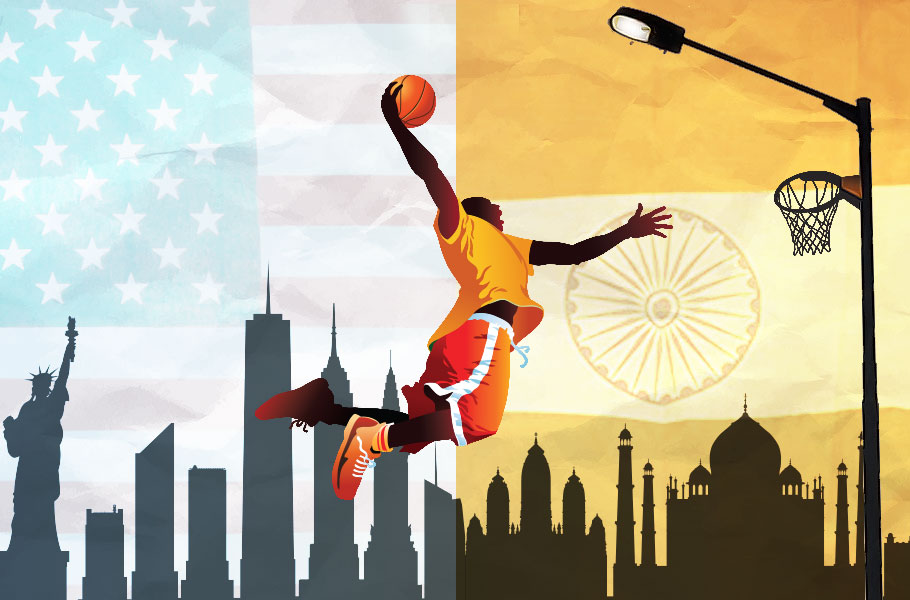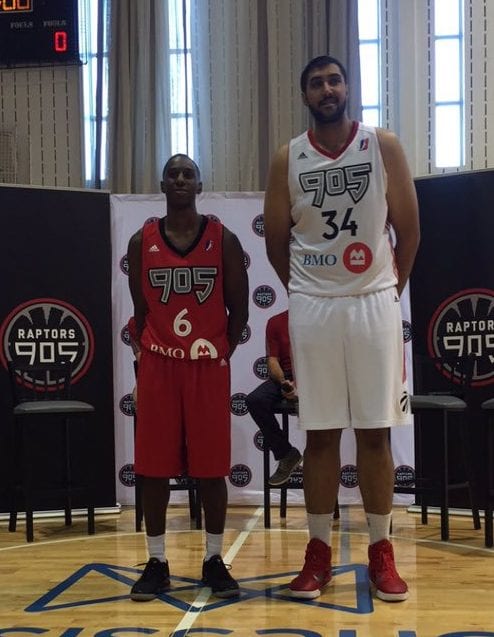
- Home
- News
- Analysis
- States
- Perspective
- Videos
- Education
- Entertainment
- Elections
- World Cup 2023
- Features
- Health
- Business
- Series
- Economy Series
- Earth Day
- Kashmir’s Frozen Turbulence
- India@75
- The legend of Ramjanmabhoomi
- Liberalisation@30
- How to tame a dragon
- Celebrating biodiversity
- Farm Matters
- 50 days of solitude
- Bringing Migrants Home
- Budget 2020
- Jharkhand Votes
- The Federal Investigates
- The Federal Impact
- Vanishing Sand
- Gandhi @ 150
- Andhra Today
- Field report
- Operation Gulmarg
- Pandemic @1 Mn in India
- The Federal Year-End
- The Zero Year
- Premium
- Science
- Brand studio
- Home
- NewsNews
- Analysis
- StatesStates
- PerspectivePerspective
- VideosVideos
- Entertainment
- ElectionsElections
- Sports
- Loading...
Sports - Features
- BusinessBusiness
- Premium
- Loading...
Premium

NBA makes a giant leap to the final frontier, India
India’s population of 1.3 billion, when last counted and certainly already much higher, and its economy, despite the recent slowdown across industry, are just too tempting for any global operation to ignore.

For years now the International Cricket Council (ICC) has been trying to crack one riddle. Just how does a sport, played at the highest level by and large by 10 former colonies of Britain, break into two markets — China, for its population and the United States of America, for its dollars. All sort of attempts have been made, from taking matches, both exhibition and serious, to the land of...
For years now the International Cricket Council (ICC) has been trying to crack one riddle. Just how does a sport, played at the highest level by and large by 10 former colonies of Britain, break into two markets — China, for its population and the United States of America, for its dollars. All sort of attempts have been made, from taking matches, both exhibition and serious, to the land of the free and the home of the brave, from getting Chinese schools to play the game to pushing for Olympic recognition, so China adds one more sport to its list of potential medals. Nothing has worked.
But if cricket is trying to travel in one direction, there is a quintessentially American sport, and league, that is travelling in the other direction. The Sacramento Kings and Indiana Pacers played each other in Mumbai in two pre-season matches, having each travelled in excess of 13,000 kilometres to get there. They’ve already ticked the Taj Mahal box, but while taking in the sights and sounds is all very well, exactly what were the two teams from America’s National Basketball Association (NBA) doing, squaring off against each other in Mumbai?
It would be tempting to think that just as cricket is looking to globalise its game — that’s what the administrators tell the world, even though the number of teams playing in the World Cup has shrunk over the years — basketball is following suit, but the answer is much less exciting. India’s population of 1.3 billion, when last counted and certainly already much higher, and its economy, despite the recent slowdown across industry, are just too tempting for any global operation to ignore.
And, the NBA has one major advantage in that they have already seen something similar in effect, not long ago. Let’s call this the Yao Ming Effect. For those who may not follow basketball as closely, Yao is a 7’ 6” tall former basketball player from China, who became the first non-American player to be the No. 1 draft pick in the NBA when the Houston Rockets picked him up in 2002. Now, being that tall has its obvious advantages in the sport, but it also comes with a propensity for injury and wear and tear that Yao had to deal with all his playing days, right through to his retirement in 2011. By then, however, he was already Hall of Fame material, having averaged 192 points, 9.2 rebounds and 1.2 blocks our game at his peak. More important, however, was the role Yao played in taking the NBA to China.
By the time he was done with playing the game, China had more than 300 million active basketball players — about as many people as there in the America. By the time Yao retired, the NBA had actively taken the game to China, playing a dozen pre-season matches there. By the time Yao said goodbye, the NBA had established three three training centres in China, in Urumqi, Jinan and Hangzhou.
It is relatively easy to understand how Yao changed the way an entire generation of Chinese people, especially youngsters, viewed the NBA and the game of basketball. After all, nothing sells better than having a role model, an icon, a global superstar to look up to. When Yi Lianlian, another seven-footer, followed Yao into the NBA, playing for the Milwaukee Bucks, the match between the two teams is thought to be the most watched game of all time, something that can’t be verified simply because it was streamed by different services into China and those numbers are unavailable.
It is easy to understand how Yao’s presence ended up boosting not just viewership of his matches, but of merchandise sales in general — the Los Angeles Lakers’ Kobe Bryant was top of the charts in China even when Yao was playing.
But what is the play in India?
Well, the NBA clearly believes that there is more than one way to skin a cat. If an Indian cannot yet crack the big leagues in the NBA, then why not bring the big leaves to India, and see if that sort of reverse engineering works, ultimately producing a player who can seed interest back home by being drafted into one of the NBA teams?

Gursimran “Sim” Bhullar, became the first player of Indian descent (he is Canadian) to be signed by an NBA team, when he joined the Sacramento Kings in 2014. But, after only two preseason games, he was waived, and slipped down to the NBA Development League. There was hope briefly once more in 2015 when Satnam Singh was picked up by the Dallas Mavericks, but once again it was down to the Development League.
Adam Silver, Commissioner of the NBA, who once described India as a “final frontier” when it came to taking the game to new markets, clearly understands the role sport played in the bigger picture. Just days after Donald Trump referenced the NBA matches in India when he addressed a gathering the presence of Narendra Modi, Silver spoke of the value of sport. “I look through to sports, and this is something Yao Ming and I have discussed, where we can use basketball maybe in the way ping-pong was used in the days of Richard Nixon, that there could be something called basketball diplomacy,” Silver had said in May this year.
For Vivek Ranadive, owner of the Sacramento Kings, life would have come full circle, in some sense, when these matches happen. When he was 17, Ranadive left Mumbai to pursue an engineering degree at the Massachusetts Institute of Technology. Years later, the billionaire is a key mover in bringing the NBA to Mumbai.
“The Sacramento Kings are proud to be playing in the first NBA games ever held in India. As an Indian-American, it is an honour to help bring this historic moment to the country where I was raised,” said Ranadive. “The sport is experiencing tremendous growth in India and we are excited about continuing to expand the NBA’s reach to fans across the globe. The world wants to watch basketball and India is a fast-growing new frontier.”
What these pre-season matches will do to grow the game in India is as yet unclear. At the moment, India are ranked 74 in the world, behind even Guam, a country that has a population of only 1.64 lakh. In 25 visits to the Asia Championships, India have never won. They did once play in the Olympics in 1980, but this was largely due to the fact that many other countries from Asia withdrew, for political reasons. As it happened, they lost all matches they played in that tournament.
The hope is that the NBA’s interest will result in a stronger push towards furthering the game. The NBA’s youth programme has reached nearly 10 million people, and the academy that opened up in 2017 has trained more than 10,000 physical education teachers. The NBA has held approximately 1,500 grassroots events in 34 cities and towns across India. The focus on television broadcast led to more than 300 games being broadcast live in India in the 2017-18 season, with 85 of those having commentary in Hindi. In total, broadcaster Sony reported 91 million viewers for these matches.
“I expect within the next 10 years they’ll have a player out of India that plays in the NBA,” says Ranadive, perhaps as much out of love and longing for his home country than any realistic, quantifiable estimate. But all of the NBA will be hoping that his optimistic words are prophetic, for you can be sure they will be followed by the even more musical ringing of the cash registers.

